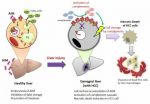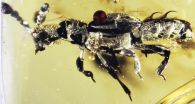(Press-News.org) As the Supreme Court of the United States begins its fall 2014 session this month, it faces decisions on several "blockbuster" cases, including freedom of speech, religious freedoms in prison, pregnancy discrimination and a possible decision on gay marriage.
Just don't expect any of these decisions until next June, just before the court's session ends.
New research from the Washington University in St. Louis School of Law finds big, or "blockbuster," cases are disproportionately decided at the end of June, just before the court's summer recess.
"We knew that more than 30 percent of the court's decisions are issued in June and more than half of those in the last week," said Lee Epstein, PhD, the Ethan A. H. Shepley Distinguished University Professor.
"We were surprised to find that such a disproportionately large number of the 'big' cases were decided so late," Epstein said.
Epstein is co-author, along with William Landes, PhD, of the University of Chicago and Judge Richard A. Posner, JD, of the U.S. Court of Appeals for the Seventh Circuit in Chicago, of "The Best for Last: The Timing of U.S. Supreme Court Decisions," forthcoming in the March 2015 issue of The Duke Law Journal.
The researchers analyzed 7,219 Supreme Court cases from 1946-2013. Using several measures to determine the significance of the cases, including front-page newspaper coverage and how often the decision was cited in later Supreme Court rulings, they confirmed that decisions on significant cases more often come at the very end of the term.
While the "big" cases were certainly more complicated and divisive — meaning they take longer to debate — the researchers found that this explained only part of the issue.
They pose three possibilities for late decisions on big cases.
The first centers on legacy and reputational concerns.
When writing what they think will prove to be major decisions, the justices take more time polishing (or, as the researchers point out, making their law clerks polish, since these days law clerks do most judicial writing even in the Supreme Court) until the last possible moment. The hope is promotion of their own reputation, since the important cases will continue to be remembered, discussed and cited long after they are decided.
A second possible explanation is that the justices delay certain decisions for public relations reasons.
The close proximity of decisions in the most important cases may tend to diffuse media coverage and other commentary of any particular case, and thus spare the justices unwanted criticism. But the opposite effect is possible: the expectation of a crowd of important cases at the end of the term can increase media attention.
Finally, though related to the second explanation, the justices, most of whom have busy social schedules in Washington, D.C., may want to avoid tensions at their social functions by clustering the most controversial cases in the last week or two of the term — that is, just before they leave Washington for their summer recess.
INFORMATION:
Older parents, birth defects, maternal nutrition and childhood exposure to CT scans and pesticides are increasingly being associated with brain tumors in children, according to new research from the Brown School at Washington University in St. Louis.
Brain and central nervous system tumors are the second leading cause of cancer death in children.
A team of researchers, led by Kimberly Johnson, PhD, assistant professor of social work at the Brown School, a member of the Institute for Public Health and a research member of Siteman Cancer Center, examined studies published ...
Where are the quantum computers? Aren't they supposed to be speeding up decryption and internet searches? After two decades of research, you still can't find them in stores. Well, it took two decades or more of research dedicated to semiconductors and circuit integration before we had digital computers. For quantum computers too it will take technology more time to catch up to the science
Meanwhile, research devoted to exploring bizarre quantum phenomena must continue to overcome or reduce a litany of practical obstacles before quantum computing can be realized. ...
Montréal, October 2, 2014 – Scientists at the IRCM discovered a mechanism that promotes the progression of medulloblastoma, the most common brain tumour found in children. The team, led by Frédéric Charron, PhD, found that a protein known as Sonic Hedgehog induces DNA damage, which causes the cancer to develop. This important breakthrough will be published in the October 13 issue of the prestigious scientific journal Developmental Cell. The editors also selected the article to be featured on the journal's cover.
Sonic Hedgehog belongs to a family of proteins that gives ...
CHAMPAIGN, Ill. — The big-headed ant (Pheidole megacephala) is considered one of the world's worst invasive ant species. As the name implies, its colonies include soldier ants with disproportionately large heads. Their giant, muscle-bound noggins power their biting parts, the mandibles, which they use to attack other ants and cut up prey. In a new study, researchers report that big-headed ant colonies produce larger soldiers when they encounter other ants that know how to fight back.
The new findings appear in the Biological Journal of the Linnean Society.
Big-headed ...
London, United Kingdom, October 2, 2014 – Despite decades of research, scientists have yet to pinpoint the exact cause of nodding syndrome (NS), a disabling disease affecting African children. A new report suggests that blackflies infected with the parasite Onchocerca volvulus may be capable of passing on a secondary pathogen that is to blame for the spread of the disease. New research is presented in the International Journal of Infectious Diseases.
Concentrated in South Sudan, Northern Uganda, and Tanzania, NS is a debilitating and deadly disease that affects young ...
A new study published in the Cell Press journal Current Biology on October 2 could rewrite the story of ape and human brain evolution. While the neocortex of the brain has been called "the crowning achievement of evolution and the biological substrate of human mental prowess," newly reported evolutionary rate comparisons show that the cerebellum expanded up to six times faster than anticipated throughout the evolution of apes, including humans.
The findings suggest that technical intelligence was likely at least as important as social intelligence in human cognitive ...
The more curious we are about a topic, the easier it is to learn information about that topic. New research publishing online October 2 in the Cell Press journal Neuron provides insights into what happens in our brains when curiosity is piqued. The findings could help scientists find ways to enhance overall learning and memory in both healthy individuals and those with neurological conditions.
"Our findings potentially have far-reaching implications for the public because they reveal insights into how a form of intrinsic motivation—curiosity—affects memory. These findings ...
This release is available in Japanese.
A University of Tokyo research group has discovered that AIM (Apoptosis Inhibitor of Macrophage), a protein that plays a preventive role in obesity progression, can also prevent tumor development in mice liver cells. This discovery may lead to a therapy for hepatocellular carcinoma (HCC), the most common type of liver cancer and the third most common cause of cancer deaths.
Professor Toru Miyazaki's group at the Laboratory of Molecular Biomedicine from Pathogenesis, in the Faculty of Medicine has shown that AIM (also known ...
LA JOLLA, CA—October 2, 2014—Scientists at The Scripps Research Institute (TSRI) have found that an enzyme best known for its fundamental role in building proteins has a second major function: to protect DNA during times of cellular stress.
The finding is remarkable on a basic science level but also points the way to possible therapeutic applications. Strategies that enhance the DNA-protection function of the enzyme, TyrRS, could help protect people from radiation injuries as well as from hereditary defects in DNA repair systems.
"We overexpressed TyrRS in zebrafish ...
Scientists have uncovered the fossil of a 52-million-year old beetle that likely was able to live alongside ants—preying on their eggs and usurping resources—within the comfort of their nest. The fossil, encased in a piece of amber from India, is the oldest-known example of this kind of social parasitism, known as "myrmecophily." Published today in the journal Current Biology, the research also shows that the diversification of these stealth beetles, which infiltrate ant nests around the world today, correlates with the ecological rise of modern ants.
"Although ants ...





